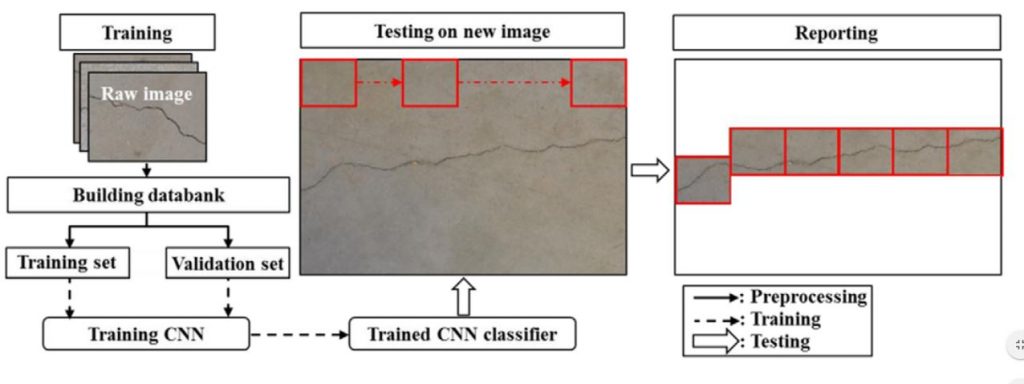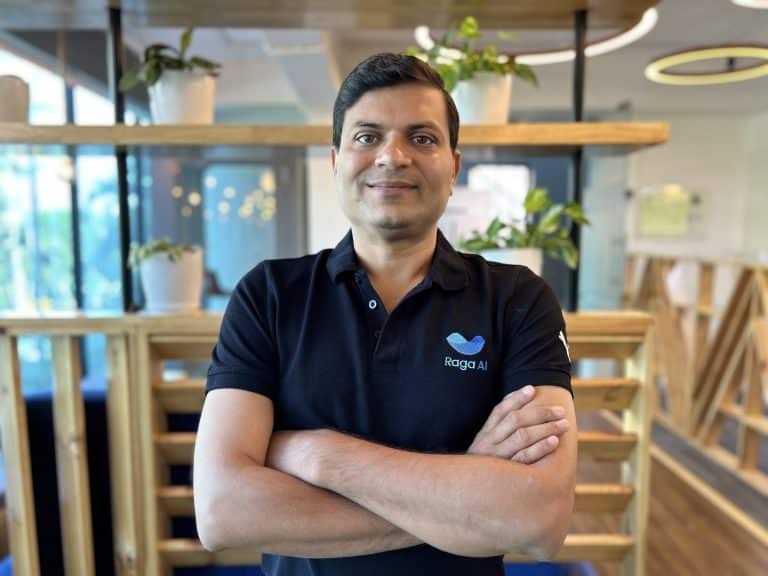In order to make large scale structuring safe, structural health monitoring (SHM) techniques have been adopted. However, SHM is fraught with several challenges too such as the inability to deal with uncertainties in large-scale civil structures. As a consequence, image processing techniques were developed. In this article, we will discuss the use of convolutional neural network (CNN) and see how it can be impactful for India’s massive infrastructure.
Damage Detection Through CNN
In their research paper titled Deep Learning-Based Crack Damage Detection Using Convolutional Neural Networks, Young-Jin Cha and team came up with a CNN-based framework to detect concrete cracks in structures that actually does not look into defect features in depth. This eliminates the need for image processing techniques as CNN learn from image features rather than without relying on images.
Therefore, a dataset of raw images captured with a DSLR camera and showing image specific variations is used. These images are tweaked into small images, to create training and validation sets. Once ready, they are fed into the proposed CNN for training. After training, CNN is tested for new images. The entire process is shown below.

The CNN architecture has 8 inner layers alternating between convolution and pooling layers which also includes a ReLU activation layer and a softmax layer. All the layers perform a host of mathematical operations in order to build a classifier to detect cracks and related surface anomalies. This forms the training part.
Now this classifier is subjected to validation after training. Just like classic ML, this is to increase accuracy if the CNN encounters new images apart from the ones in the dataset. With results showing around 98 percent for both training and validation for around 300 images, this CNN was also consistent when it came to image variations. But, for this CNN architecture to be successful in other applications, the researchers suggest collecting a large amount of training data.
Where This CNN Finds Application In Indian Scenario
Infrastructure problems in India have been looming over the past few decades. A variety of factors can be said to be the reason. Be it environmental effects or even the rising population, infrastructure in India is bound with challenges.
When we consider all of these issues surrounding structural elements, optimising resources is the right way forward. For example, assessment in giant structures such as bridges or dams are still observed through manual methods in India despite the presence of vision-based techniques. The fear of expenses rising up is another factor here. If this mindset does not change, it is hard for emerging technologies to find its place in civil engineering.
Deep learning techniques such as Cha et. al.’s CNN can go a long way in structural analysis. They do away with time-consuming manual inspection for fault detection in structures. Also, even when a structure is being built, it is susceptible to damages. Risk analysis, usually done by site engineers, can be done with DL methods.
Again, one of the most important things here is right data. For example, Cha’s study used images from a single data source i.e, one dataset. However, in real-time, DL requires uniform data constantly to work smoothly. For this, data sources need to be integrated into a single platform so that the underlying technique can use data efficiently.




















































































